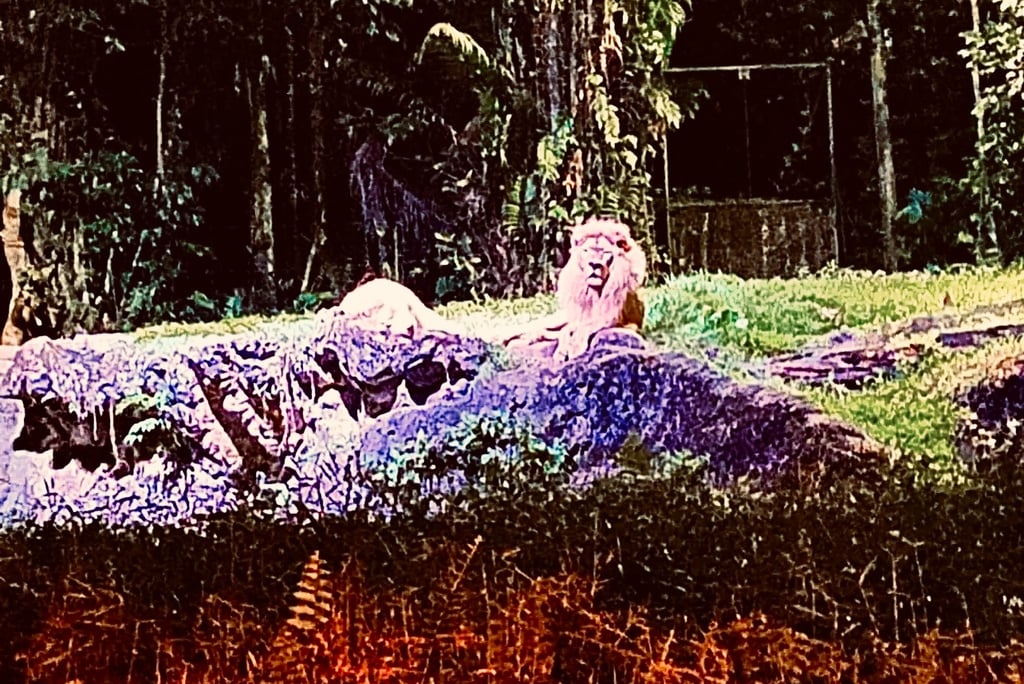The superiority of lioness over lions
1/5/20256 min read


Introduction to Lions as a Species
The Lion's Cloak, The Wolf's Truth
True quiet ambition over preachy ambition
Lions (Panthera leo) are a species of large cats known for their regal appearance and their significant role in ecosystems across Africa and parts of Asia. Biologically classified under the family Felidae, lions exhibit traits that distinguish them from other members of the Panthera genus, such as tigers, leopards, and jaguars.
Physically, lions are the second-largest big cats, following tigers, with males weighing between 330 to 550 pounds and females slightly smaller, typically ranging from 265 to 400 pounds. Their muscular build and powerful limbs enable them to hunt effectively, mainly preying on large herbivores like zebras and wildebeests. Unique to lions among the big cats is their social structure, residing in groups called prides. A pride usually consists of several related females, their offspring, and a coalition of males. This social organization not only aids in hunting but also provides protection and support for cub-rearing and territory defense.
The moniker "king of the jungle," despite their primary habitat being savannas and grasslands rather than jungles, underscores the lion's status as a top predator. This title reflects not only their physical prowess but also their cultural significance as symbols of strength and courage across various societies. However, lions face numerous threats, including habitat loss, hunting, and conflicts with humans, leading to a decline in their populations. Currently classified as vulnerable by the International Union for Conservation of Nature (IUCN), efforts to conserve lions and protect their habitats are crucial in maintaining the balance of the ecosystems they inhabit. The majestic lion thus represents not only power and dominance but also the urgent need for ecological stewardship.
Habitat of Lions
The majestic lion is predominantly associated with the vast African savannahs and grasslands, where these magnificent creatures thrive in various ecosystems. The natural habitats of lions are primarily found across Sub-Saharan Africa, spanning countries such as Kenya, Tanzania, South Africa, and Botswana. These regions provide lions with the necessary resources, including abundant prey and sufficient shelter, contributing to their status as apex predators.
Lions prefer open landscapes interspersed with vegetation, allowing them to effectively hunt and establish territories. The savannah, with its mix of tall grass, shrubs, and scattered trees, serves as an ideal hunting ground. In addition to the savannahs, lions can also be found in semi-arid regions and open woodlands, where they continue to display their adaptability. However, their populations are increasingly threatened by human encroachment, which disrupts these vital ecosystems. As urban areas expand, competition for resources intensifies, leading to habitat fragmentation and a decline in prey availability.
Climate change further exacerbates the challenges facing lion habitats. Altered rainfall patterns and increased temperatures can affect the growth of vegetation, impacting prey species and, subsequently, the lion population. In response to these threats, various conservation efforts have emerged to protect lion habitats and ensure their survival. Initiatives such as protected areas, wildlife corridors, and community-led conservation programs have proven essential in safeguarding these majestic animals and their ecosystems. By emphasizing the importance of maintaining the natural habitats of lions, stakeholders can work together to promote coexistence between human activities and wildlife preservation.
Roles of Lion and Lioness in the Pride: A Comparative Analysis
The social structures within a lion pride are both fascinating and complex, showcasing distinct responsibilities between male lions and lionesses. Male lions are primarily tasked with territory protection. They establish dominance over a geographic area, which can span several miles, often by patrolling the boundaries and marking their presence with roars and scent markings. This territorial responsibility is crucial, as it protects the pride from rival males that may attempt to take over and disrupt the social order. A male’s ability to maintain control over these areas directly impacts the pride's access to resources like food and water, creating a vital role in the overall survival strategy.
In contrast, lionesses tend to take on the primary responsibility for hunting and nurturing the young. They exhibit remarkable cooperation when hunting, often working together in teams to stalk, chase, and bring down prey. This communal hunting behavior maximizes their chances of success, allowing them to bring food back to the pride efficiently. In addition to hunting, lionesses are responsible for the growth and protection of cubs, often forming strong bonds that enhance the overall stability of the pride. Their nurturing instincts ensure that the offspring are fed, socialized, and protected from threats, including those from outside intruders.
Both roles are interdependent; the success of a lion pride relies on the dynamic interplay between the male’s protective measures and the lionesses’ nurturing and hunting skills. For instance, a well-protected territory allows lionesses to hunt without the constant threat of rival prides, while her successful hunts ensure that the entire pride, including the male, is well-fed. This cooperative behavior underscores the complexities of their social structure and highlights the importance of each member’s role within the pride. Understanding these dynamics offers valuable insights into the survival strategies employed by these majestic animals in their natural habitats.
The Superiority of Lionesses Over Lions
In the complex social structure of a lion pride, lionesses often demonstrate remarkable qualities that can be seen as superior to those of their male counterparts. One of the most prominent aspects of this superiority lies in their exceptional hunting abilities. Lionesses typically engage in cooperative hunting, utilizing strategic teamwork to take down prey that is often larger and more formidable than themselves. Unlike lions, who are more likely to rely on their size and strength for dominance, lionesses showcase precise skills, agility, and intelligence, which ultimately enhances the pride's chances of successful feeding.
Moreover, lionesses are primarily responsible for nurturing and raising the cubs within the pride. They exhibit strong maternal instincts, often nursing and caring for the young ones while teaching them essential survival skills. This nurturing role is crucial for the cubs' development and the pride's long-term survival. While male lions play a part in defending the territory, it is the lionesses that ensure the continuity of the pride through their dedication to raising the next generation. The lionesses' protective nature is evident as they collaboratively guard their cubs against threats, proving that leadership can manifest in ways beyond mere physical strength.
Additionally, the prevailing gender dynamics observed in lion behavior challenge traditional notions of strength and leadership. While male lions possess certain attributes that facilitate dominance, such as their mane and size, it is the female lions that exhibit consistent leadership qualities within the pride. Their decision-making skills regarding hunting strategies and pride movements highlight their importance in ensuring the overall success and stability of their social group. In this context, lionesses not only secure food and care for the young but also contribute to the survival of the entire pride through their intelligence and cooperation. This multifaceted role underscores the remarkable capabilities of female lions, redefining the concept of what it means to be the true rulers of the jungle.
The lioness stands as a vital pillar within the pride, embodying strength, nurturing, and leadership. As the primary hunters, lionesses work collaboratively to secure food for their families, showcasing their remarkable teamwork and strategy. Their protective instincts ensure the safety of the young cubs, fostering a nurturing environment where the next generation can thrive. Through their relentless dedication, they maintain the social structure of the pride, balancing fierce independence with a deep sense of community. The lioness not only sustains the physical well-being of the group but also symbolizes the beauty and resilience of wildlife. As guardians of their home, lionesses exemplify the intricate dynamics of nature, reminding us of the essential roles each member plays in ensuring the survival and prosperity of the pride. Their majestic presence is a testament to the power and grace of female strength in the animal kingdom.
While many people adore cats for their independent nature and playful antics, I find myself not quite a fan of these feline companions. There’s something about the loyal and affectionate nature of dogs that truly captures my heart. Dogs offer a unique bond filled with companionship, playfulness, and unconditional love that I find more appealing. Each pet has its own charm, but for me, the bond with dogs stands out the most. Their energy and loyalty are unmatchable, making them my preferred choice when it comes to furry friends.


Contacts
Socials
Subscribe to our newsletter
support@otgscience.in
Copyright © 2024 otgscience.in
.
